By: Jeremy Neisser
Ham radios offer reliable communication in emergencies, making them essential for safety-conscious individuals. When cell towers fail or the internet goes down, ham radios still function, providing a lifeline in critical situations.
Beyond emergencies, ham radios open up a world of global connectivity. I can communicate with operators worldwide, broadening my horizons and fostering new friendships.
Learning about ham radios deepens my technical knowledge. Operating these devices involves understanding frequencies and signals, a fascinating dive into the world of electronics and physics.
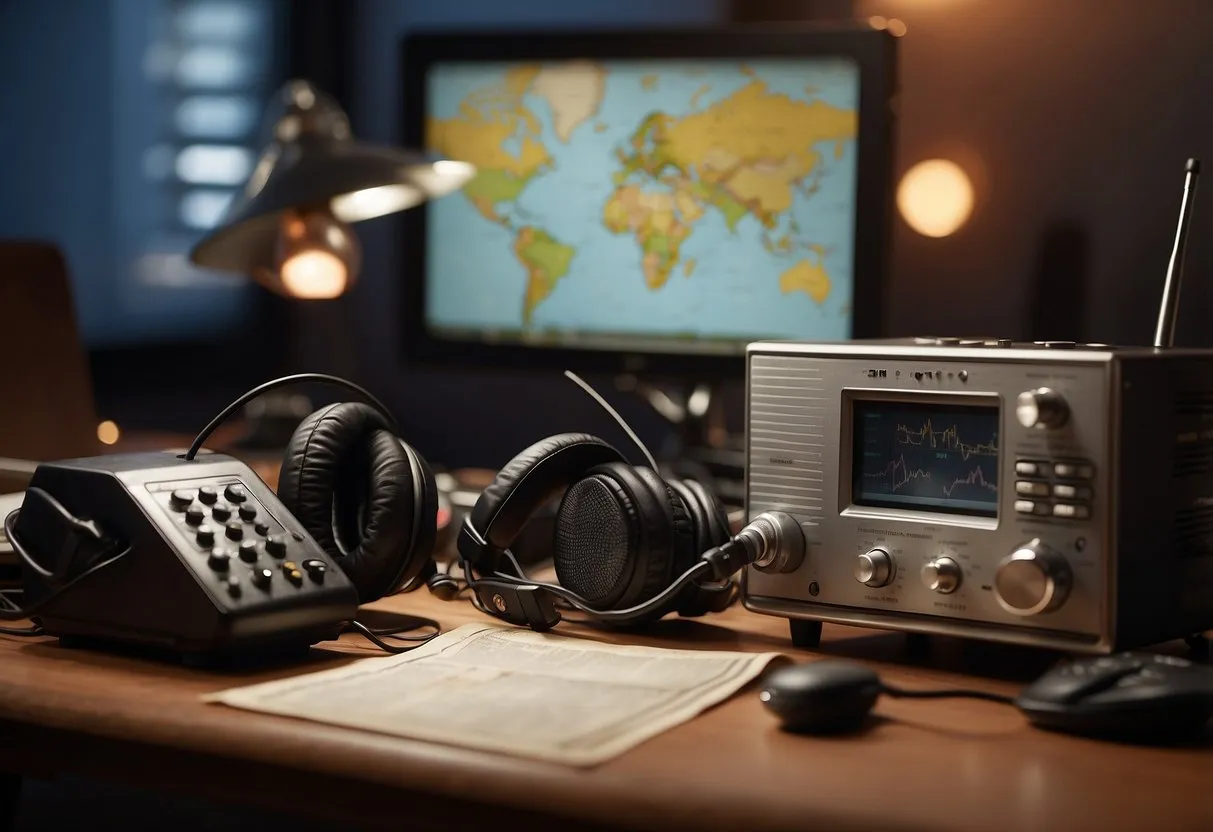
The Basics of Ham Radio
Ham radio, also known as amateur radio, enables hobbyists to communicate over long distances without the necessity of the internet or cellular networks. Its rich history and technical aspects make it a fascinating and practical hobby.
What Is Ham Radio?
Ham radio, or amateur radio, is a service and hobby in which operators use various types of radio equipment to communicate with each other.
This non-commercial radio service allows for personal communication, experimentation, and emergency use.
Operators must be licensed by their country's regulatory body, such as the FCC in the United States.
Equipment ranges from simple handheld transceivers to complex base stations with powerful antennas.
Many amateurs enjoy building and modifying their own equipment.
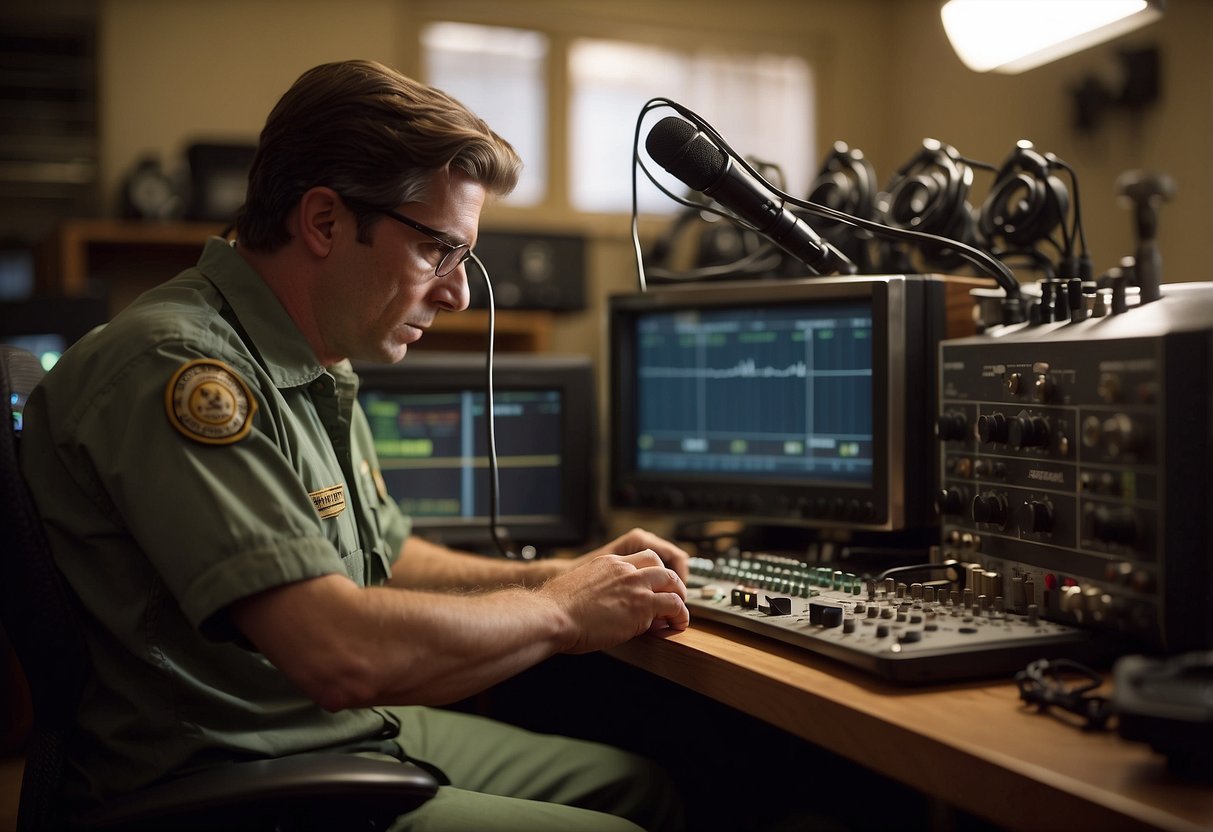
The History of Amateur Radio
Amateur radio dates back to the late 19th and early 20th centuries. In the early 1900s, enthusiasts started experimenting with wireless communication.
The first recognized amateur radio club, the Radio Club of America, formed in 1909.
Amateur radio operators played significant roles during wartime, providing communication when professional services were unavailable.
The term "ham" to describe amateur operators likely originated in the early 20th century.

Understanding Radio Frequencies
Radio frequencies for amateur radio are designated by the International Telecommunication Union (ITU).
These frequencies are broken into bands, each with unique characteristics.
Popular bands include HF (High Frequency), VHF (Very High Frequency), and UHF (Ultra High Frequency).
HF bands are known for long-distance communication, while VHF and UHF are commonly used for local communication.
Knowledge of how different frequencies behave is essential for effective communication.
Getting Started with Ham Radio
Starting your journey into ham radio involves picking the right equipment, setting up your station, getting licensed, and finding local clubs for community support and learning.
Choosing Your First Radio
Picking your first ham radio is crucial. I recommend starting with a handheld transceiver (HT) due to its portability and ease of use. Brands like Yaesu, Icom, and Baofeng offer great beginner options.
Focus on radios that support VHF and UHF frequencies, as these bands are commonly used by beginners.
Look for features like rechargeable batteries, multiple channels, and easy-to-read displays.
Budget typically ranges from $30 to $150, ensuring you find an affordable yet reliable radio. I always suggest reading reviews and forums to make informed decisions.
Setting Up Your Station
Once you've selected a radio, setting up a home station is next. Start with a good antenna; it can make all the difference in your signal quality. I recommend a dual-band antenna for VHF/UHF use. Place it as high as possible for better reception.
Next, get a power supply that matches your radio’s requirements. For home use, a desktop power supply is often ideal. Setup also includes connecting cables and ensuring good grounding to prevent electrical interference.
A simple setup can start with a radio, antenna, power supply, and coaxial cables. Expanding later is always an option.
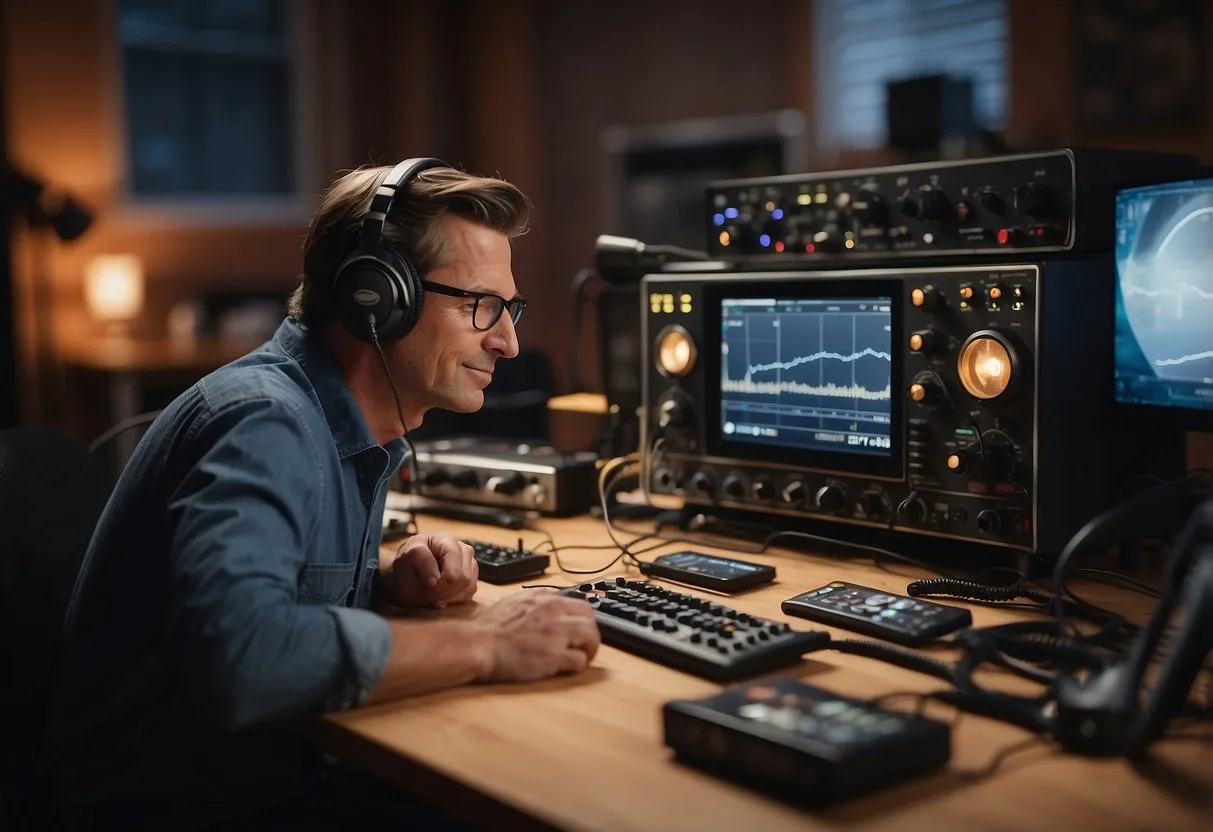
Obtaining a Ham Radio License
Before transmitting, you need a ham radio license. The entry-level Technician Class license is a great start. The exam covers basic regulations, operating practices, and electronics theory. Study guides and online resources can help you prepare effectively.
ARRL (American Radio Relay League) offers extensive resources and practice tests. Once you feel ready, find an FCC-approved exam session near you. Study consistently, and you’ll pass the exam with confidence.
The license provides access to most bands and modes, giving ample opportunity to explore and learn. It’s a fundamental step to ensure legal and responsible operation.
Finding Local Ham Radio Clubs
Joining a local ham radio club can enhance your experience. Clubs offer mentorship, resources, and events where you can learn from experienced operators. Use resources like the ARRL website to find clubs near you.
Meeting regularly with other hams helps improve your skills and knowledge. Clubs often host field days, workshops, and social gatherings.
Additionally, being part of a community provides support when troubleshooting issues or experimenting with new setups. Get involved, and your ham radio experience will be more enjoyable and educational.
Technology and Equipment
In the realm of ham radio, understanding the key components such as transceivers, antennas, power supplies, batteries, and Morse code equipment is crucial for effective communication and operation.
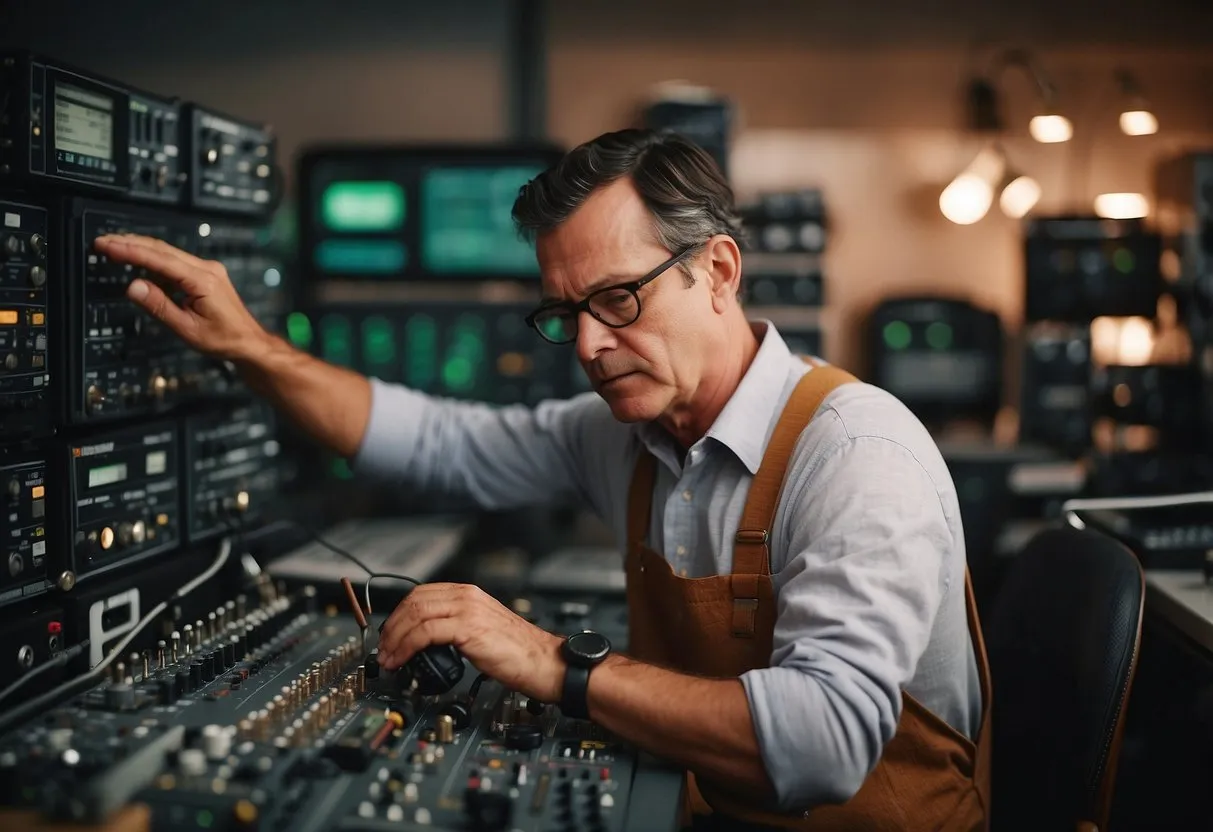
Transceivers Explained
A transceiver is essential in ham radio, combining both a transmitter and a receiver. Many models offer features like variable frequency ranges, digital signal processing (DSP), and user-friendly interfaces. For beginners, I recommend starting with a transceiver featuring straightforward controls and robust build quality. Advanced users often seek models with additional functionality, like multiple modes (AM, FM, SSB, CW) and band coverage.
Antennas for Different Frequencies
Antennas vary based on the frequency used. For HF bands, wire antennas such as dipoles are common because of their simplicity and efficiency. VHF/UHF frequencies often utilize Yagi or vertical antennas for their directional capabilities and compact size. I always match the antenna to my specific operating needs, considering factors like gain, radiation pattern, and installation constraints.
Power Supplies and Batteries
Reliable power supplies are critical. Linear power supplies offer stable output with minimal noise, while switching power supplies are more efficient and lighter. For mobile operation, I often use deep-cycle batteries, which provide sustained power over long periods. Having backup options ensures uninterrupted operation, especially during extended sessions or field operations.
Morse Code Equipment
Morse code, or CW, remains a vital mode in ham radio. Keying devices range from straight keys to electronic keyers and paddles. Straight keys are straightforward to use, while electronic keyers offer customizable settings for speed and tone. I prefer a paddle for its versatility and ease of use in high-speed communication.
Operating Your Ham Radio
To use a ham radio effectively, you need to understand basic operating procedures, manage interference, and perform regular maintenance and troubleshooting.
Basic Operating Procedures
The first step is to understand the controls on your ham radio. Begin by turning on the radio and adjusting the volume and squelch controls.
You will need to tune into a specific frequency. Refer to a frequency plan to find the right one. Once tuned, identify your station using your call sign.
Start communicating by pressing the push-to-talk (PTT) button and speaking clearly into the microphone. Listen before you talk to ensure the frequency is clear.
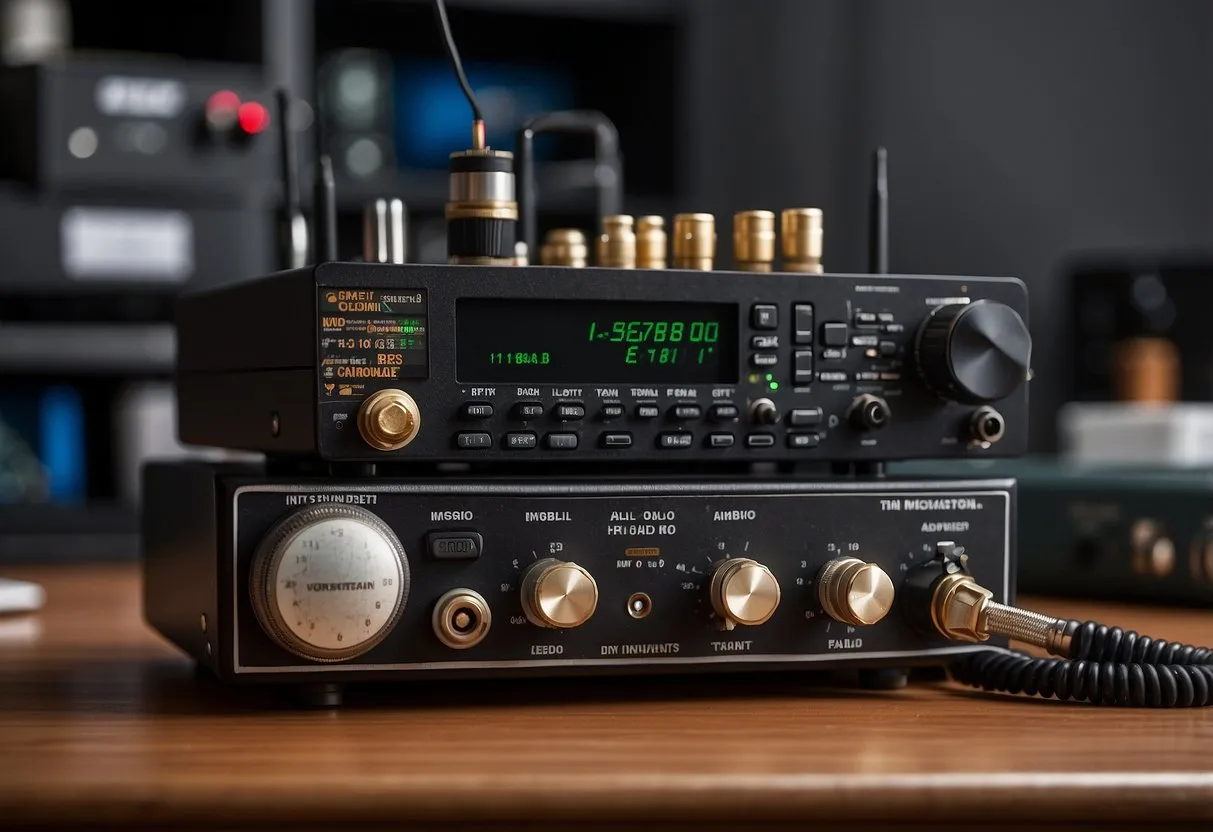
Managing Interference
Interference can disrupt communication. To manage this, identify the source first. It could be from electronic devices or other radio signals.
Use filters on your antenna to block unwanted signals. Adjust your radio’s squelch and RF gain controls to minimize noise.
Consider using a directional antenna if the interference is persistent. Relocating your antenna to a higher position can also reduce interference.
Maintenance and Troubleshooting
Maintaining your ham radio ensures it continues to work well. Regularly check the antenna connections and coaxial cables for wear and tear.
Clean the radio's exterior and check for any signs of damage. Replace any worn-out parts immediately.
Troubleshooting requires a methodical approach. Start by checking power sources, then move on to connections and settings. Use a multimeter to test voltage levels if needed. For more complex issues, refer to the user manual or seek advice from experienced operators.
Communication and Community
Ham radio offers unique opportunities to connect with others, both in times of calm and crisis. It cultivates a sense of community and provides essential services during emergencies.
Building a Ham Radio Community
By joining local and international ham radio networks, I have the chance to meet people who share my interests. These communities hold regular meetups, both online and in-person. Group activities like field days and contests foster teamwork and camaraderie. For me, these events are invaluable for honing my skills and expanding my social circles.
Emergency Communication
When traditional communication systems fail, ham radio is often the most reliable option. I've witnessed how ham operators provide critical updates during natural disasters, coordinating rescue and relief efforts. This ability to maintain communication in dire circumstances is indispensable, often making the difference between life and death.
Public Service and Volunteerism
I often participate in community events where ham radio operators assist with logistics. Whether it's a marathon, a charity walk, or a local fair, our services help ensure safety and efficiency. My volunteer efforts not only aid my community but also grant me the satisfaction of contributing to the common good.
Networking with Other Hams
Through ham radio, I've connected with operators from all over the world. These interactions allow me to exchange ideas, share experiences, and learn new techniques. International contacts can offer fresh perspectives and innovative solutions, enriching my understanding of the hobby and its applications. Networking supports growth, both personally and technically.
Advancement and Learning
Ham radio offers a rich world of opportunities for learning and personal growth. By exploring various aspects of radio, one can continuously advance their knowledge and skills.
Continuing Education in Radio Science
I immerse myself in continuous education about radio science, which is critical for staying updated with the latest technological advancements. There are numerous courses available online and in-person that cover a broad spectrum of topics, from basic electronics to complex communication theories. Participating in these courses helps me deepen my understanding and keep my skills sharp.
Experimenting with Radio Technologies
Experimenting with radio technologies allows me to put theory into practice. I often build my own antennas, work on custom transmitters, and test different frequencies. This hands-on approach not only reinforces my technical knowledge but also keeps me engaged and excited about new discoveries. Through experimentation, I gain practical insights that I couldn't acquire from reading alone.
Attending Workshops and Conferences
Workshops and conferences are invaluable for my development in the ham radio community. These events offer sessions led by experts, opportunities to try out new equipment, and forums to discuss complex issues with peers. By attending these gatherings, I stay informed about industry trends and make valuable connections with fellow enthusiasts who share my passion.
Subscribing to Ham Radio Publications
Subscribing to various ham radio publications is another essential part of my learning journey. Magazines, newsletters, and online publications provide me with in-depth articles, news, and reviews on the latest technologies and practices. Regular reading helps me stay current and continuously expand my knowledge base.
The Global Aspect of Ham Radio
Ham radio opens doors to international communication, allowing enthusiasts to connect with others worldwide and navigate different radio regulations.
Making International Contacts
One major appeal of ham radio is the ability to make international contacts. With the right equipment and skills, I can chat with operators across the globe. This aspect turns ham radio into a bridge, bringing people from diverse cultures and backgrounds together.
Using specific frequencies and modes, I can participate in contests and events where I might be able to reach stations in Europe, Asia, or even Antarctica. Such connections are not only thrilling but educational, expanding my knowledge of geography and international protocols.
Choosing the right time and frequency is crucial. Different bands are more effective during certain parts of the day or year. Understanding propagation conditions helps me maximize my chances of making those distant contacts.
Understanding Radio Regulations Worldwide
When operating internationally, I must be aware of varying radio regulations. Each country has its own rules, and compliance is essential. These regulations might affect frequency usage, power limits, and permissible modes of operation.
To avoid interference, I make sure to familiarize myself with the guidelines of the country I am communicating with. Often, international organizations like the International Telecommunication Union (ITU) provide resources and standardize certain practices to facilitate smoother global interactions.
Using resources like the ARRL (American Radio Relay League) and IARU (International Amateur Radio Union) websites, I stay updated on any regulatory changes. This knowledge ensures that my international communications are both legal and respectful of other operators' practices.
Competitions and Contests
Ham radio offers a variety of organized competitions and contests that provide challenging and rewarding experiences. Participants can earn awards and certificates that recognize their skills and achievements.
Participating in Ham Radio Contests
Contests often take place over specific time frames, like a weekend. During these events, I try to make as many contacts as possible. Each contact earns points based on predefined rules.
There are different categories to compete in. Some contests are region-specific, while others are global. These competitions push my operating skills and strategy to the limit. It's an opportunity to test my equipment and setups.
I also get to interact with other operators worldwide. This fosters a sense of community and camaraderie. I usually monitor the contest calendar to ensure I don't miss these exciting events.
Awards and Certificates
Successful participation in contests can earn me awards and certificates. These are often presented by amateur radio organizations. Awards may recognize region-specific achievements or overall performance in a contest.
Common awards include Worked All States (WAS), DX Century Club (DXCC), and various other certificates. Displaying these awards is a point of pride.
Achieving these certifications takes dedication and skill. Some certificates are highly coveted and require extensive effort. This recognition motivates me to continually improve my radio operating skills.
Specialized Modes of Communication
Amateur radio operators have access to a variety of specialized modes that extend communication capabilities beyond typical radio transmissions. These modes offer unique opportunities for connecting over long distances and using advanced technologies.
Satellite Communication
Using satellites allows operators to communicate over much greater distances than possible with traditional radio waves. Amateur radio satellites, also known as OSCARs (Orbiting Satellite Carrying Amateur Radio), are specifically designed for radio amateurs.
I can access these satellites to make contacts around the world. Satellite communication is reliable and can be achieved with relatively simple equipment. Key requirements typically include a satellite tracking software, a rotatable antenna to follow the satellite’s path, and a transceiver that can transmit and receive signals on appropriate frequencies.
Moonbounce
Moonbounce, or Earth-Moon-Earth (EME) communication, involves bouncing radio waves off the Moon's surface to communicate with distant stations. This mode enables long-distance communication without relying on satellites or terrestrial repeaters.
Participating in Moonbounce requires significant power and precise equipment. A high-gain antenna, powerful transmitter, and a sensitive receiver are essential. The Moon's reflective surface and motion introduce challenges, such as signal weakening and Doppler shifts. Despite these challenges, Moonbounce is a rewarding and highly respected mode, allowing me to make unique and impressive contacts.
Digital Modes of Transmission
Digital modes use computer software for encoding and decoding data, allowing for efficient and clear communication. Modes like PSK31, RTTY, and FT8 are popular among enthusiasts.
These modes offer advantages like narrow bandwidth usage, resistance to interference, and the ability to decode weak signals. Software programs like FLdigi, WSJT-X, and others can be used to operate these modes. Simple hardware setups, including a computer and a sound card interface, make digital modes accessible to many operators. This versatility and efficiency make digital modes a valuable addition to any amateur radio toolkit.
Advocacy and Regulation
Advocacy and regulation play crucial roles in the ham radio community. The legislation surrounding ham radio use is complex, and various advocacy groups work tirelessly to support and protect the rights of operators.
Legislation Affecting Ham Radio
Legislation impacting ham radio involves various national and international regulations. The Federal Communications Commission (FCC) in the United States governs the allocation of frequencies and licensing requirements for amateur radio operators.
Key Points to Note:
- FCC Regulations: They set the technical standards that operators must follow.
- International Agreements: Treaties like those from the International Telecommunication Union (ITU) standardize practices globally.
- Operating Rights: Legal issues such as zoning laws can affect antenna installations, with local ordinances potentially imposing restrictions.
In my experience, staying updated on current legislative changes is essential to avoid violations and ensure smooth operation.
Advocacy Groups and Their Roles
Advocacy groups are indispensable in protecting ham radio privileges. They lobby for favorable legislation, provide resources, and support for operators and promote community outreach.
Notable Organizations:
- American Radio Relay League (ARRL): Focuses on education, member advocacy, and emergency communications.
- Radio Society of Great Britain (RSGB): Similar to ARRL, but specific to the UK, providing resources and advocating for operators' rights.
- Local Clubs: Many local ham radio clubs also engage in advocacy, offering a more grassroots approach to tackling regulatory challenges.
These groups organize events, offer licensing assistance, and maintain a dialogue with regulatory bodies. Through my involvement with these organizations, I've seen how they effectively shape policies and support the ham radio community.
Creative Projects and Hobbies
Ham radio enthusiasts often engage in a variety of creative projects that enhance their skills and enjoyment of the hobby. From building custom antennas to participating in radio orienteering, there's no shortage of activities to explore.
DIY Antennas and Equipment
Building your own antennas and equipment allows for customization suited to your specific needs. I find that creating a DIY antenna helps improve signal clarity and range. Plus, experimenting with different materials and designs offers a hands-on learning experience.
Homemade equipment can also be more cost-effective. Kits are often available, making it simpler to get started. I enjoy the satisfaction of seeing my homemade gear outperform commercial options.
Software Defined Radio
Software Defined Radio (SDR) merges software and hardware to create versatile and powerful radio systems. I use SDR to explore a wide range of frequencies and modes, all controlled through software on my computer.
SDR offers the ability to scan entire frequency spectrums. It's fascinating to see what can be received and decoded. I appreciate how SDR can be easily updated with software changes, keeping my equipment current without the need for new hardware.
Radio Orienteering and Fox Hunts
Radio orienteering, also known as "fox hunting," combines navigation and radio skills. Participants locate hidden transmitters, or "foxes," using radio receivers. These events often take place in parks or forests, challenging my ability to read signals and navigate terrain.
Fox hunts are not just for experts. Beginners can also join and learn. I enjoy the thrill and physical activity involved in these outdoor events. It's a great way to meet fellow enthusiasts and improve my directional finding skills.
Innovation and The Future
The landscape of ham radio is constantly evolving, driven by advancements in technology and shifts in how we communicate. Innovations are set to make amateur radio more relevant and exciting than ever.
The Future of Amateur Radio
Amateur radio is positioned for significant growth with the rise of digital communication modes. Digital Voice and Digital Data are enhancing the quality and reliability of transmissions.
Radio enthusiasts are increasingly utilizing satellite communications. High-altitude balloons are also creating new ways to explore the atmosphere and beyond.
Youth engagement is crucial for the future. Programs and communities are emerging to inspire younger generations to join the hobby.
Emerging Technologies in Ham Radio
Software-Defined Radio (SDR) is revolutionizing the field. SDRs offer flexibility and cost-efficiency by using software to perform functions that traditional hardware radios did.
Internet of Things (IoT) integration is also taking off. Ham radio operators can now connect devices and share data globally in real-time.
Another exciting development is the use of artificial intelligence (AI) for improving signal processing and managing communications. AI can filter noise more effectively and predict optimal transmission times.
The Community Spirit
Ham radio operators form a unique and supportive community. It's a hobby that fosters lifelong friendships, cultural exchanges, and inspires younger generations to engage with technology and communication.
Stories of Lifelong Friendships
I have met people through ham radio who have become some of my closest friends. Unlike many other hobbies, ham radio requires regular communication, which naturally builds strong bonds.
These friendships often start with a simple conversation about equipment or frequencies and evolve into deep, meaningful relationships.
Hams often meet in person at conventions, creating opportunities to solidify these connections. The global reach of ham radio means these friendships can span continents, offering a unique richness to social experiences.
Cultural Exchange through Radio
Ham radio provides a platform for cultural exchange. I've learned about customs, holidays, and daily life in countries I might never visit. These conversations break down cultural barriers and build mutual respect and understanding.
It's not uncommon for operators to exchange QSL cards, which are like postcards that confirm a conversation. These cards often feature images and information about the sender's country, further enhancing cultural knowledge.
Beyond just talk, many hams engage in collaborative projects, sharing techniques and practices that might differ widely between cultures.
Inspiring the Next Generation
There's a significant element of mentoring in the ham radio community. Many seasoned operators take pleasure in guiding younger enthusiasts. This mentorship encourages young people to develop skills in electronics, communication, and problem-solving.
When I help a young person build their first antenna or make their first contact, I feel a sense of pride. The hands-on experience can spark an interest in STEM (Science, Technology, Engineering, Mathematics) fields.
Additionally, many schools and clubs integrate ham radio into their curricula or activities, further promoting the hobby among the youth.
Ham Radio Etiquette
Proper etiquette in ham radio ensures a smooth and respectful communication experience. Adhering to a code of conduct is key to being a responsible operator.
Code of Conduct
Maintaining a professional tone and being courteous on air is essential. I always identify myself with my call sign, as required by regulations.
Listening before transmitting helps avoid interrupting ongoing conversations. I avoid using inappropriate language and keep my conversations relevant to the topic discussed.
Respecting others’ time by not monopolizing frequencies is crucial. I make brief transmissions and allow others to use the frequency.
Observing Quiet Zones and following local band plans helps in reducing interference. I also make sure to get the appropriate permissions before operating in specific regions or on particular frequencies.

Hi & Welcome!
My name is Jeremy and I have been an avid car nut for many year. My first car was an 1987 Honda CRX. I put in my first Kenwood stereo, amp, 2 10" JLs and a CB Radio in it and have been an avid user of CBs and car radios for years. I'll do my best to share my tips, information and thoughts to help you with whatever question you might have, ABOUT ME
After I graduated from High School, I worked 5 years are Radio Shack and 3 years at Circuit City answering questions and helping customers with various electronics questions.
